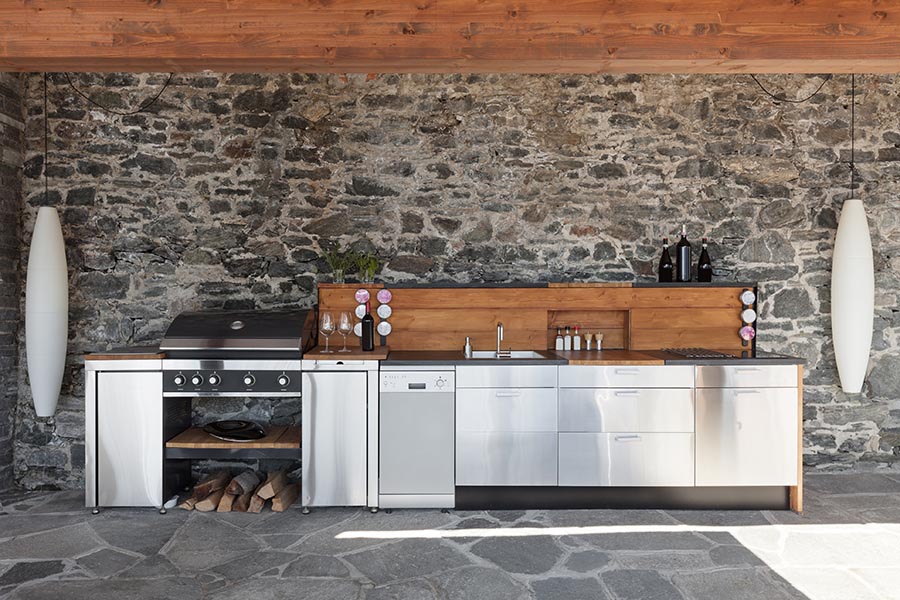 The weather is perfect, and you are enjoying hanging out in your backyard. It’s time for lunch or dinner, but you don’t want to have to go inside. Maybe it’s time to think about installing that outdoor kitchen.
The weather is perfect, and you are enjoying hanging out in your backyard. It’s time for lunch or dinner, but you don’t want to have to go inside. Maybe it’s time to think about installing that outdoor kitchen.
Amenities that support indoor/outdoor living are also a huge selling point when marketing your home. In fact, adding an outdoor kitchen sees an average return on investment of 100 percent to 200 percent, according to this Inman article.
So, what type of issues do you need to consider when installing an outdoor kitchen? We’ve gathered a few key points:
Planning the Structure
Grilling experts the BBQ Guys want to remind you that your outdoor kitchen will need an insulated grill jacket to keep the structure cool, and that you should also install vent panels. Keep in mind that you will need to plan for storage and proper food-preparation areas. Consider adding a pizza oven, a built-in griddle, a refrigerator, or a wine cooler. If you really want to go all out, consider adding a built-in entertainment system. Just like with an inside kitchen, design your outdoor cooking space to have a good working flow.
Utilities
On top of planning to store propane tanks (and don’t forget to always have an extra one on hand), depending on the features of your outdoor kitchen, you may need to have access to utilities. “When planning layouts, keep in mind the best practical placement or installation of the necessary gas, water and electrical supply,” HGTV says. According to the company, adding plumbing will cost approximately $1,800, while gas lines will add about $500 to $600 to the project. Check with a local contractor for a more accurate picture of pricing before you start building.
Exposure to the Elements
Plan to build with low-maintenance materials and to avoid porous surfaces. According to CountertopSpecialty.com, granite countertops are durable and can stand up to various weather conditions. “Sealing granite countertops is a good idea to prevent stains,” the company adds. Concrete and soapstone are also excellent choices for outdoor kitchen countertops. When it comes to flooring, “don’t let fashion override safety, say The House Designers. Though concrete is the most popular and widely used outdoor flooring option, ceramic tile, natural stone, and brick are also good options. Avoid porous tiles and stones because they can be slippery.
Don’t forget about sun protection. “Sun shelters, pergolas, gazebos, awnings, canopies and other light sun shades bring refreshing coolness and comfort into backyard designs,” according to DesignRulz. DIY Network offers some affordable alternatives, such as canopies, awnings, and umbrellas.
Free-Standing Barbecue Grills
Maybe you don’t have the space for an entire outdoor kitchen. Good news — outdoor grills have really advanced over the past few years. Some models offer smoker boxes, infrared burners, warming racks, thermometers, and rotisserie kits. The BBQ Guys offer a list of best free-standing grills in their BBQ Grill Awards, based on price and performance. And, The Spruce rates smaller grills.
Head over to HGTV for more information on how to design an outdoor kitchen space. In addition, Houzz has hundreds of outdoor grill options. And be sure to check out the BBQ Guys’ list of mistakes to avoid when building your outdoor kitchen. If you are on a budget, DIY Network has some great ideas on how to create an outdoor cooking space for less money. Happy grilling!
(Photo: iStock/piovesempre)

